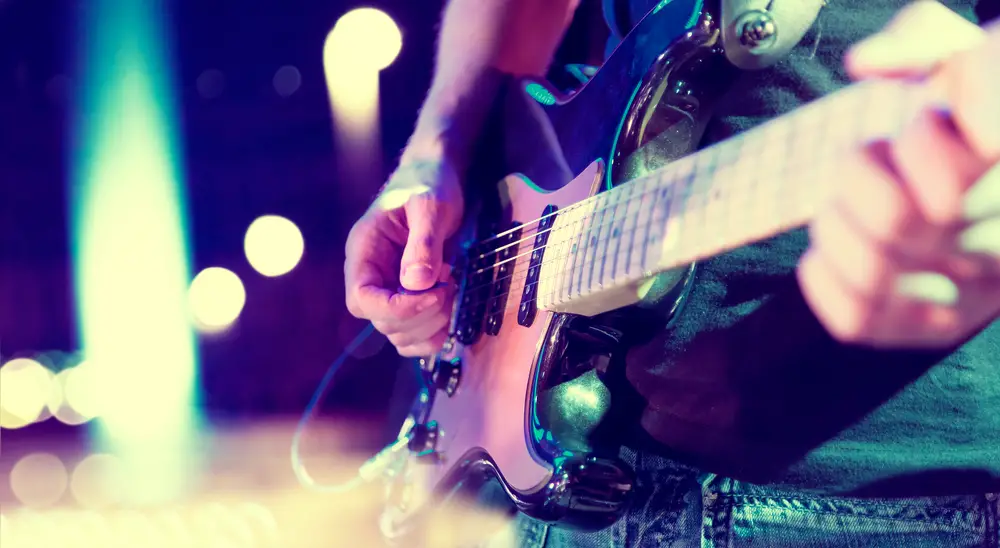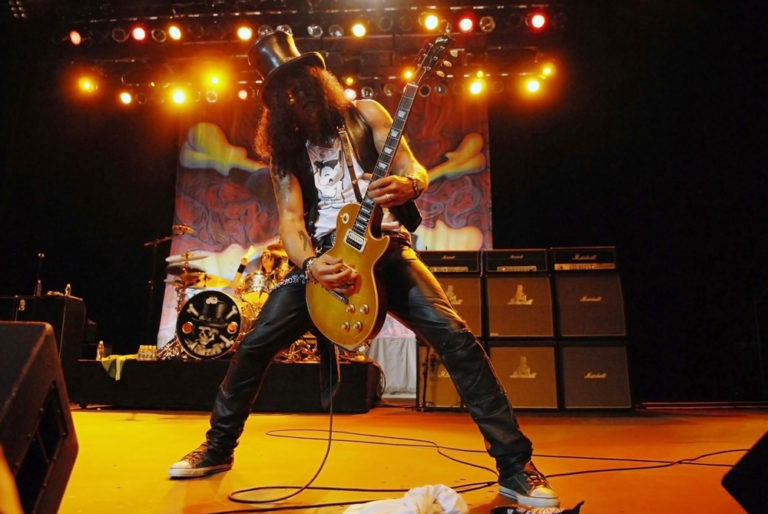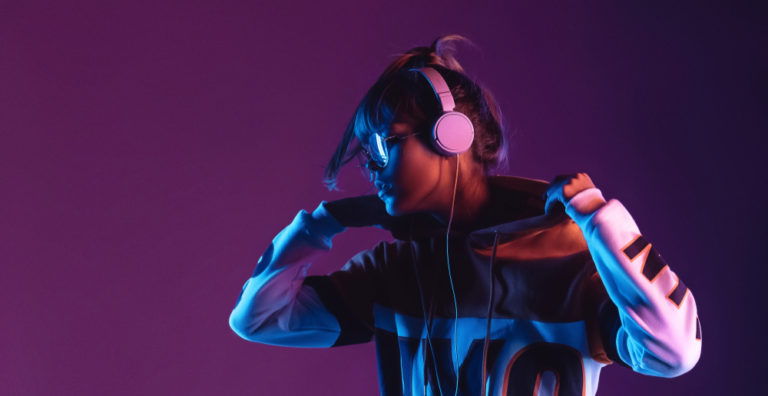10 Reasons Why Rock Music Is Art
Whether we listen to it for entertainment, background noise, inspiration, concentration, or to kick things up at a party, music plays a major role in our lives. However, it isn’t often considered to be in the same category as the paintings, sculptures, and other “more cultured” iterations of Fine Arts that feature in art galleries. So is music art? I certainly believe so, and here are ten reasons why Rock music is art:
Art is a term we used to encompass a wide range of activities that involve creating visual, performative, or audible artworks, through the use of technical skills, to express the artist’s convictions, emotions, and imagination. Therefore, by definition, Rock music is art.
However, there’s a lot more to explore when it comes to defining art, let alone to define music or Rock music. And, if we’re going to go into why Rock music is considered art, we have to understand the basic definitions and nuances.
What Is Art?
Art is the expression or application of our creative skills and our imaginations, typically through visual mediums, such as paintings or sculptures. Artworks are produced to be appreciated for their beauty or power to evoke strong emotions. Other forms of art will all involve some degree of creative thinking, but primarily are intended to convey a message, express emotions, and/or be appreciated for their sheer beauty.
However, Art cannot be categorized with just one definition, because art itself is incredibly subjective. Subjectivity also applies to the artists themselves. For some, art is a product of hard, time-consuming work, applying artistic techniques and adding a creative twist. Others may consider art to be a collective of emotions, strung together to delight audiences.
What Makes Rock Music Art?
If one considers music to be a form of art, this means it fulfills the parameters for the definition of art, but there is no factual basis for the argument, due to subjectivity. What entertains and brings up emotions in me won’t necessarily do the same for you. Music, and art in general, is subject to your individual tastes.
We have a natural tendency to consider music to be art because we typically associate anything that involves creativity as art. In fact, the word “music” is derived from the name Muses, the inspirational Greek goddesses of literature, science, and the arts.
We first start to see music emerge as a popular, accessible form of art with a genre from which Rock music originates, Blues music. Louis Armstrong’s “Basin Street Blues” was the first song that he recorded and became a staple of every home after its release in 1929.
Since then, Rock Music has emerged through the rise to prominence of Rock ‘n Roll in the 60s and the subsequent popularisation of everything from Progressive Rock to Alternative Rock to Grunge and Heavy Metal.
In every way, all of the music that has been created over the decades since the electric guitar was popularized by Elvis Pressley – Rock music – has been the most accessible form of art. It’s available to the masses, easily consumed, distributed, and one may even consider it as the most advanced, refined, and popular form of art of the late 20th and early 21st Century. And that trend seems likely to continue.
Is Music A Science?
This is where things become slightly complicated. We’ve already discussed how artists use technical skills to create artworks that convey a message or emotion. This means that there is a stringing together of various elements (guitars, vocals, drums, keyboards, etc.) used in a precise way to maximize its beauty.
What is the difference between a vibrating string and the combination thereof that brings together the sounds of a string orchestra? The vibrating string is a sound, the amalgamation of these sounds is music.
Musicians need to understand how melodies and harmonies are created and how to employ musical intervals and other basic structural elements to kickstart a chemical reaction in the listener’s brain, utilizing its emotional capacity and other functions that are a consequence of our natural physiology. This is something that neuroscientists have been studying for decades and have still yet to find a definitive answer for.
One such example is the Golden ratio (“Fibonacci numbers”)– a unique mathematical relationship also referred to as the “divine proportion”. This Golden Ratio (1.618) is frequently found in nature, such as the number of petals on a flower, but also in music, such as the timing and lengths of verses and choruses.
It shows that there is certainly a scientific basis in music (and Rock music), but it’s not an absolute law. And music has the potential to teach us a lot more about the human brain than we like to think, especially considering that music is often used as a therapeutic device for therapy and other forms of rehabilitation. Research suggests that it has the power to alter the structure of the brain.

10 Reasons Why Rock Music Is Art
If we consider the definitions and distinction between art and science above, there are several ways to make the argument for considering Rock music to be art.
1. Everyone Gets It
The thing that separates a chart-topping single from the Fine Arts galleries that exhibit paintings, sculptures, and other visual mediums is that music doesn’t require a complex analysis of creative elements or an intricate understanding of the subject matter to be appreciated. A Rock music fan with no musical education whatsoever can enjoy the music just like the rest of us.
Art galleries tend only to be accessible to elites and represent a form of “higher culture”. The mass market cannot afford to spend thousands of dollars on an oil painting but can easily afford a $10 album or a $20 per month Spotify subscription.
Therefore, if art is a form of human expression, music is the art form that has only become more and more accessible to audiences and artists over the years, while the Fine Arts are increasingly becoming a hobby for wealthy collectors. But, more so, appreciating the visual elements used in Fine Arts is a little harder to grasp than doing the same for music, even though an informed opinion is still more valuable than an uninformed one.
2. Dance, Dance
Music and dancing will forever be intertwined. Music provides the rhythm that makes dancing possible – a fun activity for all. All over the world, this is a universal truth, which is why music transcends all cultures. And, along with the music, different cultures have taken on a visual form of art that couldn’t exist without it.
On top of this, most musical acts incorporate the visual medium of dance into their performances. Go to any live show, and you’ll see a band’s frontman framed by a sea of background dancers while singing their number one hit, perhaps incorporating a few dance moves on their own. This is because the visual elements of dance are intertwined with the music, and it adds an additional layer to the crowd’s experience of the band’s music. It adds a dynamism that would otherwise be missing if the experience was purely auditory.
3. Relaxation
One of the best qualities of music is that it helps you to relax. Many activities can be augmented by music, be it while driving, working, or spending time at the gym. In this way, music has become a permanent fixture in all of our lives, particularly considering that we can curate our playlists for a specific setting that maximizes our appreciation, making otherwise mundane activities more entertaining.
In today’s fast-paced world, relaxation is a rare commodity. Yet, somehow, we can all use music to find that small escape that detaches us from the world around us. The unique phenomenon is typically reserved for the greatest artwork of them all… mother nature. How is it possible that a song can have the same effect on a person’s emotions and be appreciated as much as a sunset? It’s simply because that song is a successful artwork.
4. Soundtracks
If you want evidence of exactly how music can supplement other forms of art and drive emotions, the use of music in movie soundtracks is a great example. Where would all the great silver screen moments be without the tear-jerking compositions and scores that add an extra, even subconscious, element to iconic moments? For example, the love song playing at the end of the Romcom when the guy gets the girl brings out emotions that reflect the feelings conveyed through the script. It’s a supplement used to achieve the goal of invoking an emotional response.
5. Mood/Expression
Rock music can be considered sad, happy, angry, energetic, cathartic, and so much more. All art is supposed to reflect the artists’ moods and to inspire an emotional reaction. It is an expression of imagination, piecing together pieces of the puzzle of the creative process.
Without this focus on moods and emotions, Rock music would not be art. Try to listen to Eric Clapton’s “Tears in Heaven” and not get emotional, or John Lennon’s “Imagine” without feeling inspired to change the world…

6. Composition
Like a painting, sculpture, mural, or any visual artwork requires a piecing together of various visual elements. Music does the same with auditory elements. Lyrics are also like poetry and often serve as the critical element of a song, inspiring the most robust emotional responses.
Rock music puts the pieces of the puzzle together, combining vocals, instruments, songwriting to reenact the things going through the artist’s head, express emotions, provide commentary and reflect various criticisms of society and the world around us.
7. Creative Process
Like the Fine Arts, Rock music undergoes a long creative process between when an artist first conceives an idea for a song and when audiences hear the song for the first time.
Rock bands spend hours upon hours in recording studios, composing lyrics and instrumentals, refining a specific sound, and taking a nuanced, stylistic approach for a unique end product that separates the band in question from their competition – other bands that already have something similar to offer.
8. A Form of Communication
Art has a communicative element that cannot be overlooked. Whether it’s The Starry Night, The Scream, The Sistine Chapel, or Led Zeppelin’s “Stairway to Heaven”, these forms of art are intended to convey a message. But Rock music, unlike the visual arts, doesn’t require thorough analysis like art does. The message is typically clear and concise and doesn’t require an academic discussion on brush strokes and color composition to understand the message, which is often found in the lyrics.
9. Visual Elements
While we talk about Rock music as an auditory experience, let’s not forget the visual elements that are also part of the experience.
The way that Rock musicians style themselves has always been a key element in the genre, from Elvis Pressley’s jet black all-American golden boy look to The Beatles’ long hair and identical grey suits to David Bowie’s Ziggy Stardust alter ego to Limp Bizkit’s Wes Borland’s stage makeup, fashion plays a major role in our perception of musicians and rockstars in particular.
Then, let’s not forget that music videos have become a key component for the modern musician’s success. An entirely new creative process takes place when trying to match various visual elements with the music.
And, returning to dancing, let’s not forget the time spent on choreography not only for music videos but for live performances as well. Live performances also commonly involve some kind of lighting set, lasers, pyrotechnics, and a whole host of eye-catching elements that have been captivating the audience’s attention and imaginations for as long as Rock artists have been packing out arenas.
Over and above this, each Rock music album has to feature album cover art, which is often designed by band members, at least in collaboration with a graphic designer or another visual artist. One of the most appealing things about Pink Floyd’s Dark Side of the Moon was its unique album artwork that featured no images of the band members. These album artworks are especially important because they are just as symbolic as the music inside and represent what the album means to the band itself.
10. Political/Social Commentary
Finally, to be a musician, to be an artist, one’s work must be a mirror that one holds up to the society around them. Just like a well-placed streetside mural can inspire change and shine a light on critical social issues, music does the same. The entire Hippie movement that made the 60s such a revolutionary decade for Rock music is fundamentally grounded in criticism of society, of youth counter-culture.
The Woodstock concert of 1969, attended by almost half a million people, retains its place as a turning point in history that shifted political attitudes in post-war America. Pink Floyd’s The Wall was a radical criticism of war, propaganda, and the underlying causes of drug addiction.
These are all critical conversations that we need to have, and the cultural shifts are fundamental to the advancement of our society and the entire human race. Rock music is counter-culture, and without it, we lose one of the most potent weapons for change and progress that we have.
Rock music is a core tenet of modern culture that is critical for the health of our society in all of the same ways that art has always been. It is an emotional outlet for both artists and their fans. It is put together through a creative process and takes on multiple facets, embracing all elements of art.
To deny that Rock music is art serves not only to discredit Rock music but all forms of art itself. In fact, in the modern age, one could argue that Rock music is the most prevalent form of art, given that millions, if not billions, of people around the world, consume it and have their daily experiences shaped by it.
It incorporates numerous auditory and visual elements to express an artist’s unique emotions. If it invokes the same feelings from a listener, then it can be considered a successful endeavor. In short, yes, Rock music is art.
Sources
- What is Art? Why is Art Important? | Artist PopLab
- Is Music A Fine Art? | Arts Journal
- Music as Art | Odyssey
- Why is music considered an ‘art’? | The Masskara Festival
- Is music a form of art? | Quora
- Why is music considered an ‘art’? | Quora
- Rock’s Most Experimental Subgenre: A Brief History of Art Rock | Underground
- Why Music is the most Important Art Form and the Best Entertainment | Overblown
- “Music is an art form of expression, it should bring the inner side of an artist to the surface and give the world an insight of his vision, it is a form of communication” – Martin Landsky | Decoded Magazine
- The Golden Ratio | National Geographic Society








